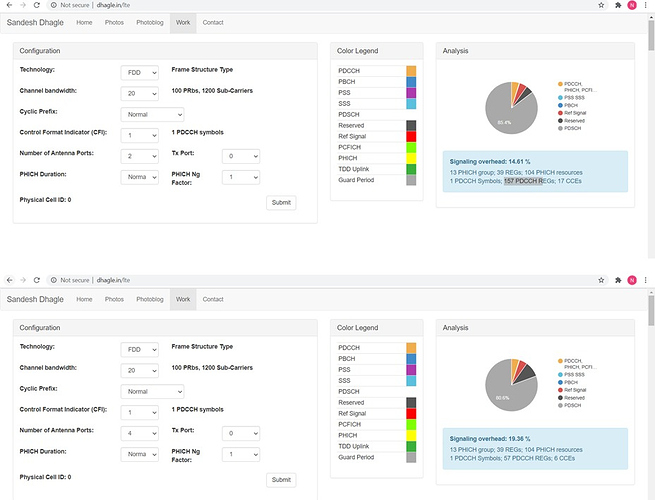Why 4T4R is used in high bandwidth and why coverage shrinks?
Is it because eNodeB send 4 streams of data in parallel?
Does rs power increase in 4T4R lead to more interference as compared to 2T2R?
Coverage shrinks as compared with…?
Coverage is less as compared to 2T2R.
I suppose… base power distributed in 4 port so it shrink coverage but can compensate by increase in RS power…
4T4T used in high Bandwidth because of capacity.
But interference will be more, thats the drawback.
I think PDCCH aggregation level can be increased to compensate coverage and throughput decrease a bit. To give scheduling priority to coverage, maybe.
You mean to say throughput degraded after 4T4R implementation?
This is the website to understand as port increase pdcch decreases and so does PDSCH.
RS signal will only be distributed.
Sso if BLER and CQI is good we can decrease ng factor to increase cce in case of high cce utilization. Nnothing to do with RS power as lot of reserved slot too are available for robutness in case of some UE in poor RF for nack.
No throughput doesnt degrade it increases a lot pdcch agggrgation level if reduced will give priority to coverage if users scheduled in poor coverage and comprise a bit on throughput.
Antenna port decreases throughput as per this link. high transmission and high reception will lead to high throughput.
RRU AND PORTS basically play a role i think for lte throughputs and cce and ng for hich groups ack/nack. if someone can help because this is a topic in lte which confuses me.
For FDD with 10Mhz channel bandwidth rs power at output with 40 W (for 2T2R) radio power will be 43-3-10log(50)- 10log(12) = 12.2 dbm with crsgain of 3 db it will be 15.2 dbm. Similarly for 4T4R output power at each port will be 40-3+3-10log(50)-10log12 = 12.2 dbm so coverage will shrink for 4T4R and hence to compensate for the same higher power license in radio unit mostly 80 W.
Generally rs power = pmax -10log10(no of prb ×12)+ Rs boosting gain(if there) …what this 10 log 12 and -3 factor.
12 PDSCH REs and 3 refers to feeder loss.
Pa and pb as per Huawei and crs gain as per Ericsson.
In Ericsson, We usually change TypeB gain along with CRS gain.
Antenna port and 2T2R or 4T4R as this in RRU are two different components.
I have confusion regarding this…
Basic of maths if u will open log(a*b) it will be logA+ logB… -3 is feeder loss
I think we should convert Watts to dBm and use dBm instead of watts in calculations.
So, 40 Watts will become 46 dBm and RS power becomes 21.2 dBm for 2T2R case.
If you will set radio unit with 40 Watts power then for 2T output power for each branch will be 20 Watts i.e 43 dbm and not 46 dbm.
You are right 
Any formula to calculate cell coverage or radius in km based reference signal power?
You can use path loss formula.
I am not sure for any other measurement method.
May be others in the group can help better.
You can have cell range as 100 km with 20W antenna, i believe and specs allow that.
That may not mean you actually want to do that.
Cell Radius depends on topology, traffic, etc.
What is +3 in this?
